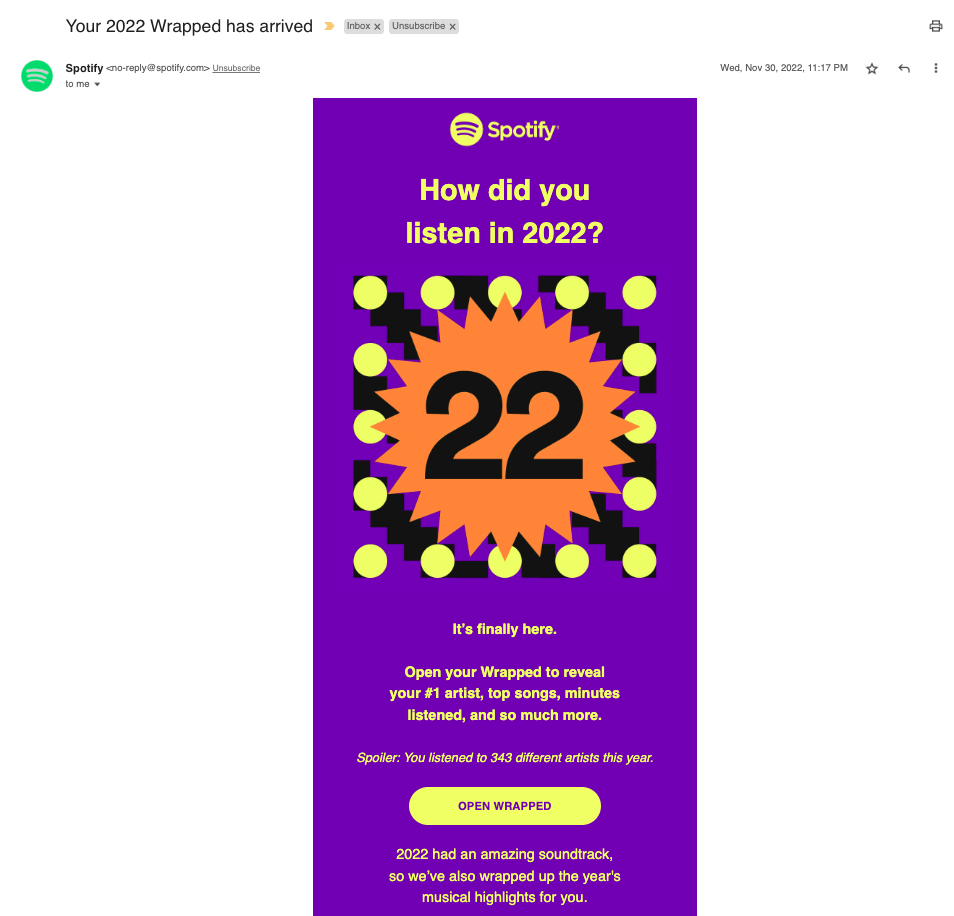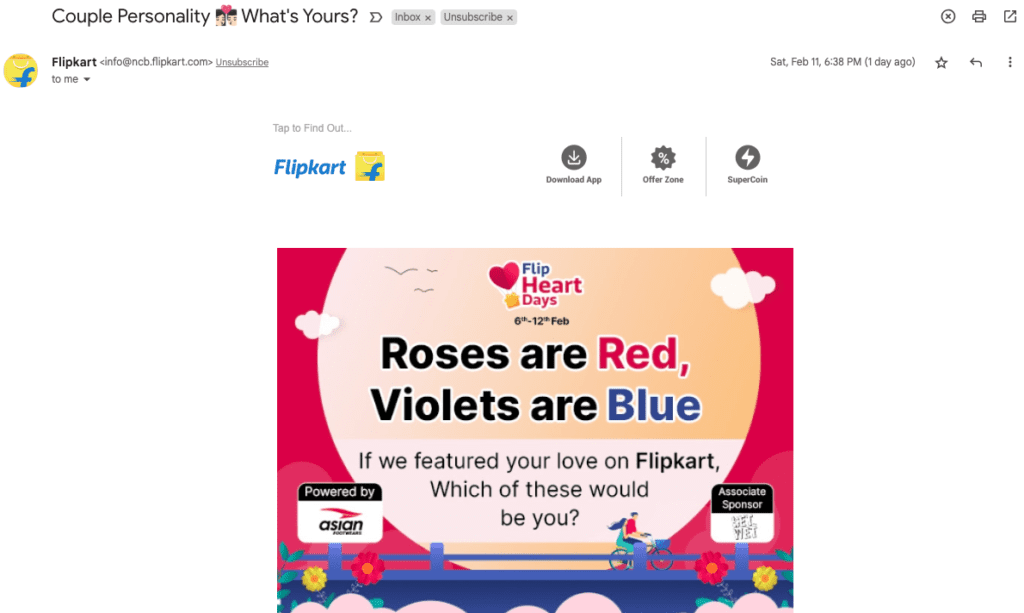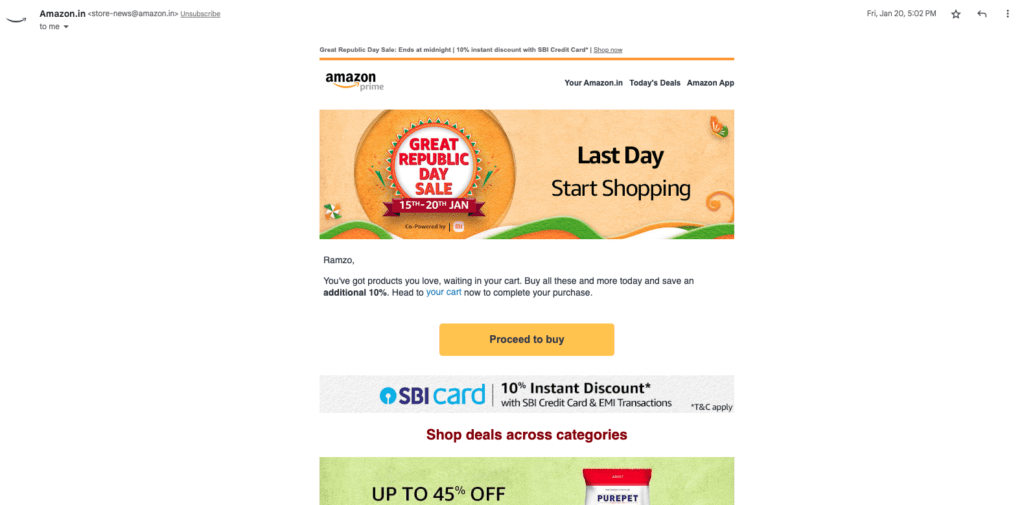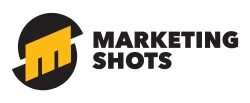Is your email marketing strategy part of your overall digital strategy? Since every 5 of 10 emails is unsubscribed or marked spam. You might wonder whether to include email marketing in your digital marketing funnel. Is it?
The best marketers tend to make this mistake.
“Email has an ability many channels don’t: creating valuable, personal touches at scale.” David Newman
Email marketing is unrivalled when reaching out to new people and developing relationships with them. Personal, measurable, and permission-based marketing automation has replaced mass emails. In the age of digital marketing, it remains one of the most efficient and effective methods.

2024 Consumer Trend Index
Regarding Driving Sales, Email Marketing is the No 1 option.
A fundamental question,
What is email marketing?
The world’s best brands, like Ikea, Airbnb, Apple, and SingLife, use email to reach consumers and share new offerings. Well-run email marketing campaigns help them build relationships, increase sales, and attract more visitors to their websites. They also use email to stay in touch with existing customers and establish rapport with new ones.
The world is taking email marketing strategy seriously. A typical office worker spends “20 hours per week on email, or almost 140 emails daily (including email newsletters, promotional emails, and official emails)”. In the next four years, there will be 4.4 billion people using email worldwide. Emails are becoming increasingly accessible due to mobile devices, breaking down boundaries between work and life.
Using social proof, moo, a product design company, increased its email click-through rates by 22%. The company includes customer reviews and ratings in its emails to build trust and interest in people.
Benefits of email marketing
There are many benefits to using email marketing to reach out to customers.
- Broader Reach: Compared to other marketing tactics, the number of people who can access your message is significantly greater.
- Cost-effective: Email marketing is one of the most cost-effective marketing tools.
- Targeted Messages: You can customise your messages to target specific audience segments.
- Measurable Results: You can track the results of your campaigns by measuring metrics like open and click-through rates.
- Automation: Automated email campaigns can save time and effort while giving you a personalised experience.
- Market segmentation has many benefits. Divide contacts into different groups, such as gender, age, and location. This ensures that your messages are more relevant and tailored to your audience.
A successful email marketing strategy focuses on
- Target audience
- Customer data,
- Email subject lines,
- Email marketing goals and stats
- Automated email or drip campaign
- Email deliverability
Email Marketing Statistics for 2025
93% of B2B businesses use email marketing campaigns to promote content.
As per McKinsey & Co. reports,
“57 % of Internet users have signed up for a newsletter or blog published by a well-known brand. They spent 60 to 120 minutes per week reading these emails.”
Email open rates have increased by 78% over the past 180 days.
Jeff Bezos, Amazon’s founder, is an email marketing strategy expert and a fan of transactional email. Amazon has created a robust email marketing framework:
- After the welcome email, Amazon sends targeted emails to customers based on their shopping and browsing habits. The data intelligence customizes each email by choosing from Amazon’s 350 million-item catalogue.
- Amazon’s recommendations are personalised and drive over 35% of product sales online and offline.
- The company uses email automation to deliver more engaging and personalised content, increasing open rates and CTRs (click-through rates). Every customer segment is closely monitored to measure the ROI for each segment.
What is email marketing strategy?
An email marketing strategy is a set of techniques for promoting products and services through email. It aims to build relationships with potential customers, keep existing customers engaged, and generate sales.
Email marketing requires list-building, personalization, segmentation, timing and frequency, A/B testing, and analysing and measuring results. Review open, click-through, and conversion rates to understand subscriber behaviour and improve performance.
Creating an Email Marketing Strategy
The first step in unlocking the power of email marketing is to create a strategy. The email marketing head should define what he wants to achieve with email campaigns and develop a plan to achieve these goals.
An example of an email marketing strategy is
“Spotify uses personalised recommendations to increase mobile app traffic, generate revenue through advertisements, and promote Spotify Premium. They send users a weekly playlist based on their listening preferences via email. Personalization led to a 46% increase in user engagement.”
Start by defining objectives. What do you want to achieve with email campaigns? Is it to increase sales, drive website traffic, or build customer relationships? Once you’ve defined objectives, create a plan.
Next, decide on the target audience for email campaigns. Are you targeting existing customers, potential customers, or both? How will you segment your market? Create lists for each segment. Will you segment it based on interests, demographics, or something else? Here, you can read more on market segmentation.
Finally, decide what kind of content to send out in emails. Will you send out special offers, discounts, or something else?
Lastly, decide how often you will send emails and what email marketing tool you will use to send them.
Developing an Email Marketing Plan
After deciding on the email marketing strategy, brands create an email marketing plan and calendar. Your plan should include who, what, and how often you send emails.
- Email marketing increases sales by promoting products, highlighting discounts, and encouraging customers to purchase.
- Businesses can use email to encourage people to visit their websites and product pages, an excellent way to get subscribers interested in their brand.
- Businesses can use email to build brand awareness and position themselves as thought leaders.
- You can encourage more people to sign up for an email list by asking current subscribers to share, running social media campaigns, or offering incentives.
- Email can help keep customers by sending them personalised messages at critical points in their journey↗, which makes them more engaged and loyal.
- Email can educate customers about a product or service or provide tips and insights.
- Email can keep leads interested and turn them into customers by sending targeted messages at different sales funnel stages.
As Seth Farban, Spotify’s Chief Marketing Officer, says,
“Personalization is key to our marketing strategy. Using data and insights to understand our listeners’ preferences, we can create targeted and relevant campaigns that resonate with them.”

Spotify’s email marketing goals include the following:
- Sell Spotify premium subscriptions.
- Acquisition of new customers and referrals
- Promote recent albums and playlists.
- Promote events and concerts.
- Promote user-generated content and podcasts.
- Increase customer retention and lifetime value.
- Profit from free users through in-app advertising.
Email List Building Suggestions
Cultivate an active and substantial email subscriber base to run a successful email marketing campaign. Buying email lists isn’t the only option, as companies already have a wealth of untapped contact information lying dormant.
According to survey data,
“86% of potential customers want to hear from the companies they signed up with at least once a month.”
- Online Form: An easy and effective way to build an email list is to add a sign-up form or link to your website, blog, and social media profiles.
- Give users a good reason to sign up, like special discounts or content from behind the scenes, and they’ll be more likely to give you their email addresses.
- Give potential subscribers a taste of what they can expect when joining your mailing list. Fostering trust will increase your subscriber base.
- Encourage existing subscribers to refer their friends and family to your mailing list. Word-of-mouth marketing is a potent tool for spreading your message quickly.
- Use a double opt-in process to ensure accuracy and legitimacy. This will protect your sender’s reputation and create an environment of trust between you and your subscribers.
Keep your list clean by regularly removing inactive subscribers and unsubscribing from it. This will help keep it up-to-date and ensure only emails are sent to those who want them.
Email segmentation and personalization
After building an engaged email list, segment and personalise your emails. Segmenting your list will help you send more targeted emails, increasing engagement and conversion rates.
Flipkart’s emails are all customized. It is not “Dear Esteemed Customer” but “Dear Raj.” It is not “You may enjoy these…” (randomly produced), but “You may enjoy these…” (based on my purchasing history).

Sales conversion requires user action. As an email marketing expert, use the below checklist before launching any email campaign:
- Segment your audience based on their purchasing journey, preferences, shopping habits, and other implicit and explicit behaviours.
- Personalize emails to improve open and click-through rates.
- Make the content relevant to the lead’s persona or disposition: send different emails to a cold lead versus a warm lead.
- Use marketing automation features like “personalization in the subject line” to make it more appealing.
Market segmentation↗ helps contextualise digital marketing.
Here are some examples of Spotify’s customer segmentation strategy:
- Spotify categorises its users based on their musical tastes to recommend new albums and concerts to them.
- Spotify categorises its users based on how they listen so that it can make personalised recommendations for playlists, podcasts, and radio stations.
- Spotify segments users based on their location to promote local music events.
- Spotify segments users based on their subscription plans to provide personalised recommendations for exclusive content.
Automated email marketing
Increase the ROI from email marketing by using it for “moment marketing,” which involves tracking customer interactions and sending personalised messages in real-time. The goal is to nurture leads, build relationships, and drive conversions.
Amazon uses an automated email marketing strategy to promote daily deals and encourage users to purchase. One of their email campaigns, aimed at people who had abandoned carts, led to a 12% rise in sales.

D2C Beauty Brand Email Marketing Strategy
Arun, who heads the email marketing strategy for an online beauty and fashion brand in India, suggests the following steps:
- List all email addresses that could be used for email automation configuration↗. You can send personalized emails to each group, including order confirmation, card abandonment, purchase history, and returning visitor information.
- Set your email marketing goals. One of our objectives is to convert prospects into customers, so we set up a series of welcome emails that provide new subscribers with information about our products and services. And direct them to our YouTube influencer videos.
- Create engaging email content: An email should be concise, informative, engaging, and aesthetically pleasing. Include images and videos to break up the text.
- Use automation tools: Email marketing tools can help create templates, schedule emails, track open rates and clicks, and manage campaigns. There are popular options like Mailchimp, Constant Contact, and Hubspot.
- When analysing the metrics for your email marketing↗, choose key performance indicators (KPIs) that directly impact your conversions. Email CTR is one of the most critical metrics for measuring traffic to your product listing page from emails.
Strategies for Optimizing Email Campaigns
When Neil Patel stated, “Email marketing is a powerful tool for businesses because it’s a direct line of communication with your customers,” he referred to maximising email effectiveness, which can be accomplished through continuous optimization.
Email optimization increases open, clicks, and conversions while decreasing bounces and unsubscribes. “55% of emails are opened on phones.” As a result, the email should be designed with mobile in mind and optimised for desktops and email inboxes.
Following the advice of experts, we have compiled the list below.
- Focus on building a quality email list of individuals who have expressed an interest in your business, products, or services.
- Please keep your email list up-to-date and eliminate inactive subscribers to make it easier for people to get your emails and reduce spam.
- Use a concise, engaging subject line that describes the email. Your subject line is the first thing subscribers see in their inbox, influencing whether they open your email.
- Use images, videos, and infographics to break up text and make your message more engaging.
- A strong call-to-action gets people to buy something or sign up for information or an offer.
- Test and track email campaign open rates, click-through rates, and conversion rates.
Birchbox, a beauty subscription company, improved the click-through rates of its emails by 93% by adjusting the wording of its subject lines. The company used split-testing to determine that shorter, more specific subject lines got the most clicks.
Courses for Mastering Email Marketing
Many resources are available to help you learn the ins and outs of email marketing. Beginners can take introductory courses that teach them how to build an email list, divide it into subsets, and write engaging messages. Advanced marketers can take classes on topics such as optimising emails for mobile devices, increasing engagement through personalization, and gauging campaign success. A few of the best courses are listed below:
- Hubspot Email Marketing Certification: Hubspot offers a free certification course covering everything from email design and list management to lead nurturing and marketing automation.
- Udemy Email Marketing Course: Udemy has many email marketing courses, including both basic and advanced levels. These courses cover building effective email campaigns, improving open and click-through rates, and measuring email marketing success.
- Coursera Email Marketing Course: Coursera offers a comprehensive email marketing course that covers email strategy, list building, design and content, automation, and analytics. Leading universities and industry experts provide the course.
- Lynda Email Marketing Course: Lynda has a range of email marketing courses, including courses on creating effective email campaigns, building subscriber lists, and measuring email marketing ROI.
- Copyblogger offers a free email marketing course that covers everything from crafting compelling subject lines to building targeted subscriber lists and creating automated email campaigns.
You can begin with the 19 most used features of a marketing automation tool↗ to get an overview and dive deeper into each feature.
Email Marketing Services
The most important details are that email marketing services offer list segmentation, automated email campaigns, email templates, analytics, and extra features like A/B testing, customer segmentation, and content that changes based on customer wants. When choosing an email marketing service, it is essential to research and compare the features of different services to find one that fits your needs and budget.
Conclusion
Email marketing is a powerful tool for customer engagement. This blog post covers everything needed to unlock its power. Successful email marketing campaigns require many steps, from strategy to planning to optimization. Email marketing can boost sales, customer loyalty, and website traffic with the right tools and knowledge.
You can continue to read “Digital Marketing Trends for 2023↗” if you wish to know the best practices for your digital marketing strategies.






